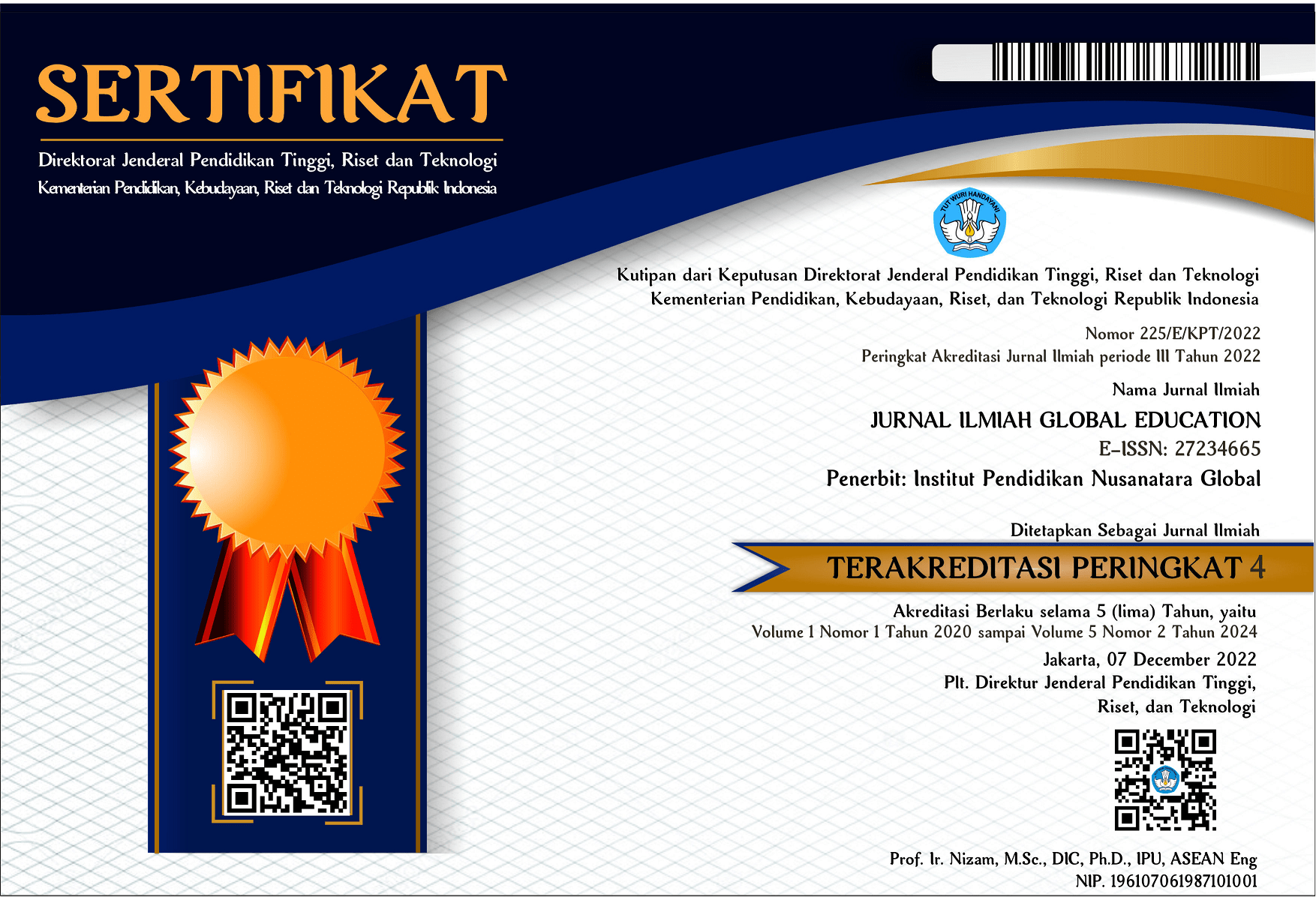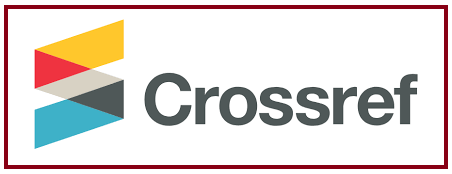Insomnia Tendency among Adolescent Smartphone Users: Gender Difference and Prevalence
DOI:
https://doi.org/10.55681/jige.v5i2.2601Keywords:
Insomnia Tendency, Sleep Duration, Difficulty Sleeping, Prevalence, GenderAbstract
The majority of Indonesian adolescents are smartphone users. Excessive use of smartphones, especially at night, can cause sleep difficulties known as insomnia. The study aims to determine gender difference and prevalence of insomnia tendency, pre-sleep activities, sleep duration, and difficulty sleeping among adolescent smartphone users. The cross-sectional design was used, involved 307 adolescents aged 13–18 years in Jabodetabek, Indonesia. Measures included an ISI questionnaire and information on gender, pre-sleep activities, sleep duration, and difficulty sleeping experience. Results showed that there is a significant difference (p 0,029) in insomnia tendency based on gender (female>male). Insomnia tendency is generally in the mild category with the prevalence of insomnia tendency 22,15% (moderate & severe). Respondents spent an average of 1 hour 22 minutes on the bed, using the internet via smartphone before asleep. Their sleep duration averaged 6,67 hours per night, 72% sleep less than 8 hours, and 51% feel don't get enough sleep. Furthermore, 58% reported difficulty sleeping, 24,43% experienced sleeping difficulties at least three nights per week, and 26,71% experienced sleeping difficulties for at least three months. Insomnia tendency is also generally found to increases with increasing frequency and duration of difficulty sleeping. These findings suggest that the insomnia tendency among adolescent smartphone users in Jabodetabek, Indonesia is high, especially compared with other countries. Therefore, it needs special attention from both academics and practitioners.
Downloads
References
Abdel-Khalek, A.M. (2017). Gender differences in self-reported insomnia in an Arab population. Mankind Quarterly, 58(1), 169–179. https://doi.org/10.46469/mq.2017.58.1.16
Amaral, M. O. P., de Almeida Garrido, A. J., de Figueiredo Pereira, C., Master, N. V., de Rosário Delgado Nunes, C., & Sakellarides, C. T. (2017). Quality of life, sleepiness and depressive symptoms in adolescents with insomnia: A cross-sectional study. Atencion Primaria, 49(1), 35–41. https://doi.org/10.1016/j.aprim.2016.03.004
American Psychiatric Association. (2013). Diagnostic and statistical manual of mental disorders (5th ed.). Washington DC, USA: American Psychiatric Association.
APJII. (2019). Laporan survei: Penetrasi & profil perilaku pengguna internet di Indonesia 2018. Jakarta, Indonesia: Asosiasi Penyelenggara Jasa Internet Indonesia.
Attarian, H. P., & Perlis, M. L. (2010). Defining insomnia. In H.P. Attarian & C. Schuman (Eds.). Clinical handbook of insomnia (2nd ed.) (pp. 3–12). New York, USA: Springer Science and Business Media.
Azwar, S. (2016). Konstruksi tes kemampuan kognitif. Yogyakarta, Indonesia: Pustaka Belajar.
Cao, X., Wang, S., Zhong, B., Zhang, L., Ungvari, G. S., Ng, C. H., … Xiang, Y. (2017). The prevalence of insomnia in the general population in China: A meta-analysis. Plos One, 12(2), 1–11. https://doi.org/10.1371/journal.pone.0170772
Chung, K., Kan, K.K., & Yeung, W. (2011). Assessing insomnia in adolescents: Comparison of insomnia severity index. Sleep Medicine, 12, 463–470. https://doi.org/10.1016/j.sleep.2010.09.019
Dahl, R. E., Allen, N. B., Wilbrecht, L., & Suleiman, A. B. (2018). Importance of investing in adolescence from a developmental science perspective. Nature, 554(7693), 441–450. https://doi.org/10.1038/nature25770
Donskoy, I., & Loghmanee, D. (2018). Insomnia in adolescence. Medical Sciences, 6(72), 1–12. https://doi.org/10.3390/medsci6030072
De Zambotti M., Goldstone A., Colrain I. M., & Baker F.C. (2018). Insomnia disorder in adolescence: Diagnosis, impact, and treatment. Sleep Medicine Reviews, 39, 12–24. https://doi.org/10.1016/j.smrv.2017.06.009
Gagnon, C., Belanger, L., Ivers, H., & Morin, C. M. (2013). Validation of the insomnia severity index in primary care. The Journal of the American Board of Family Medicine, 26(6), 701–710. htpps://doi.org/10.3122/jabfm.2013.06.130064
Gandhi, A. (2006). Women’s work, health, and empowerment. New Delhi, India: Aakar Books.
Hirshkowitz, M., Whiton, K., Albert, S.M., Alessi, C., Bruni, O., DonCarlos, L., … Adams Hillard, P.J. (2015). National sleep foundation’s sleep time duration recommendations: Methodology and results summary. Sleep Health, 1(1), 40–43. https://doi.org/10.1016/j.sleh.2014.12.010
Hosker, D. K., Elkins, R. M., & Potter, M. P. (2019). Promoting mental health and wellness in youth through physical activity, nutrition, and sleep. Child and Adolescent Psychiatric Clinics of North America, 28(2), 171–193. https://doi.org/10.1016/j.chc.2018.11.010
Huang Y.S., Wang C.H., & Guilleminault C. (2010). An epidemiologic study of sleep problems among adolescents in North Taiwan. Sleep Med, 11(10), 1035–1042. https://doi.org/10.1016/j.sleep.2010.04.009
Johnson, E. O., Roth, T., Schultz, L., & Breslau, N. (2006). Epidemiology of DSM-IV insomnia in adolescence: Lifetime prevalence, chronicity, and an emergent gender difference. Pediatrics, 117(2), e247–e256. https://doi.org/10.1542/peds.2004-2629
Lange, K., Cohrs, S., Skarupke, C., Gorke, M., Szagun, B., & Schlack, R. (2015). Electronic media use and insomnia complaints in German adolescents: Gender differences in use patterns and sleep problems. Journal of Neural Transmission, 124, 79–87. https://doi.org/10.1007/s00702-015-1482-5
Mac-Carthaigh, S., Griffin, C., & Perry, J. (2020). The relationship between sleep and problematic smartphone use among adolescents: A systematic review. Developmental Review, 55, 1–17. https://doi.org/10.1016/j.dr.2020.100897
Maslowsky, J., & Ozer, E. (2014). Developmental trends in sleep duration in adolescence and young adulthood: Evidence from a national US sample. J Adolesc Health, 54(6), 691–697. https://doi.org/10.1016/j.jadohealth.2013.10.201
Morin, C. M., & Espie, C. A. (2004). Insomnia: A clinical guide to assessment and treatment. New York, US: Kluwer Academic Publisher.
Nadia. (2019). Hubungan antara internet addiction dengan kecenderungan insomnia pada pengguna smartphone [Unpublished bachelor’s thesis]. Department of Psychology, Gunadarma University, Jakarta, Indonesia.
Nisfiannoor, M. (2009). Pendekatan statistika modern untuk ilmu sosial. Jakarta, Indonesia: Penerbit Salemba Humanika.
Noor, J. (2011). Metodologi penelitian: Skripsi, tesis, disertasi, dan karya ilmiah edisi pertama. Jakarta, Indonesia: Penerbit Kencana.
Owens, J. (2014). Insufficient sleep in adolescents and young adults: An update on causes and consequences. Pediatrics, 134(3), e921–e932. https://doi.org/10.1542/peds.2014-1696
Owens, J.A., & Weiss, M.R. (2017). Insufficient sleep in adolescents: causes and consequences. Minerva Pediatrica, 69(4), 326–336. https://doi.org/10.23736/S0026-4946.17.04914-3
Peltzer, K., & Pengpid, S. (2019). Prevalence, social, and health correlates of insomnia among persons 15 years and older in Indonesia. Psychology, Health & Medicine, 24(6), 757–768. https://doi.org/10.1080/13548506.2019.1566621
Prasetyo, A.S., Soemarko, D.S., & Kusumadewi, I. (2018). Prevalence of insomnia symptoms and predictive factors among employees at central government. Journal of Physics: Conference Series, 1073, 1–8. https://doi.org/10.1088/1742-6596/1073/4/042016
Roy, S. (2017, August 22). NSF: Sleepless tech users sacrifice sleep health. Sleep Review. Retrieved from https://www.sleepreviewmag.com/sleep-health/nsf-sleepless-tech-users-sacrifice-sleep-health/
Salbiah, N. A. (2018, March 12). Indonesia tempati angka tertinggi insomnia di Asia, apa penyebabnya? JawaPos.com. Retrieved from https://www.jawapos.com/kesehatan/health-issues/12/03/2018/indonesia-tempati-angka-tertinggi-insomnia-di-asia-apa-penyebabnya/
Suryani & Hendriyadi. (2015). Metode riset kuantitatif: Teori dan aplikasi pada penelitian bidang manajemen dan ekonomi islam. Jakarta, Indonesia: Penerbit Kencana.
Syaifullah, A. (2018, January 24). 66,3% masyarakat Indonesia memiliki smartphone #8. Indonesia Baik.id. Retrieved from http://indonesiabaik.id/infografis/663-masyarakat-indonesia-memiliki-smartphone-8
Taylor D., Gehrman P., Dautovich N.D., Lichstein K.L., McCrae C.S. (2014). Clinical features of insomnia. In Handbook of insomnia (pp. 1–9). Tarporley, UK: Springer Healthcare. https://doi.org/10.1007/978-1-907673-73-3_1
Tamura, H., Nishida, T., Tsuji, A., & Sakakibara, H. (2017). Association between excessive use of mobile phone and insomnia and depression among Japanese adolescents. International Journal of Environmental Research and Public Health, 14(7), 701. https://doi.org/10.3390/ijerph14070701
Downloads
Published
How to Cite
Issue
Section
License
Copyright (c) 2024 Anggun Fitriana, Hendro Prabowo

This work is licensed under a Creative Commons Attribution-ShareAlike 4.0 International License.













